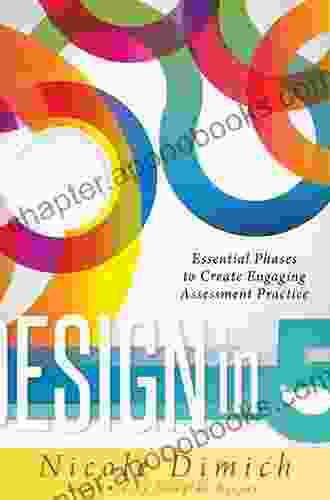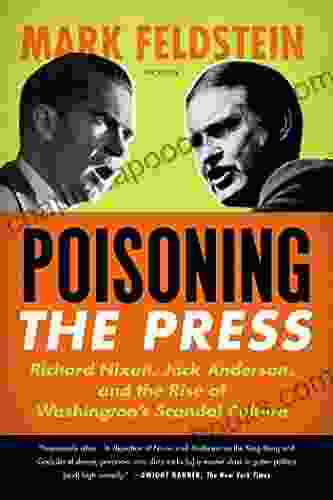Essential Phases to Create Engaging Assessment Practice

Assessment is an essential component of the teaching and learning process. It provides educators with valuable information about student learning, progress, and areas for improvement. However, not all assessment practices are created equal. To be effective, assessments must be engaging, relevant, and aligned with learning objectives.
In this article, we will explore the essential phases involved in creating engaging assessment practices. We will provide practical strategies and best practices that educators can use to design and implement assessments that foster student learning and critical thinking.
4.8 out of 5
| Language | : | English |
| Hardcover | : | 315 pages |
| Item Weight | : | 1.4 pounds |
| Dimensions | : | 6.5 x 1 x 9.5 inches |
Phase 1: Define Learning Objectives
The first step in creating an engaging assessment practice is to clearly define the learning objectives that the assessment will measure. This will help to ensure that the assessment is aligned with the curriculum and that it is assessing the knowledge and skills that students are expected to learn.
When defining learning objectives, it is important to use clear and measurable language. Avoid using vague or ambiguous terms, such as "understand" or "know." Instead, use specific verbs that describe the observable behaviors that students should be able to demonstrate after completing the learning activity.
Phase 2: Select Assessment Methods
Once the learning objectives have been defined, the next step is to select the assessment methods that will be used to measure student learning. There are a variety of assessment methods available, including:
- Formative assessments are used to provide feedback to students during the learning process. They can be used to identify areas where students need additional support and to adjust instruction accordingly.
- Summative assessments are used to evaluate student learning at the end of a unit or course. They can be used to measure student achievement and to make decisions about grading and placement.
- Performance assessments require students to demonstrate their skills and knowledge through hands-on tasks. They can be used to assess a variety of skills, such as problem-solving, critical thinking, and communication.
- Portfolio assessments are collections of student work that demonstrate their progress over time. They can be used to assess a variety of skills, such as writing, art, and music.
The best assessment method will depend on the learning objectives that are being measured and the students' grade level and learning needs.
Phase 3: Design Assessment Tasks
Once the assessment methods have been selected, the next step is to design the assessment tasks. This involves creating specific questions, prompts, or activities that will allow students to demonstrate their learning.
When designing assessment tasks, it is important to consider the following:
- The level of difficulty of the task should be appropriate for the students' grade level and learning needs.
- The task should be clear and unambiguous, so that students know exactly what is expected of them.
- The task should be engaging and motivating, so that students are interested in completing it.
Phase 4: Implement Assessment Practices
Once the assessment tasks have been designed, the next step is to implement the assessment practices. This involves administering the assessments to students and providing them with feedback on their performance.
When implementing assessment practices, it is important to consider the following:
- The assessment should be administered in a fair and equitable manner. All students should have the same opportunity to demonstrate their learning.
- Students should be provided with clear and timely feedback on their performance. Feedback should be specific and actionable, so that students can use it to improve their learning.
- Assessment results should be used to inform instruction. The information gathered from assessments can be used to identify areas where students need additional support and to adjust instruction accordingly.
Phase 5: Evaluate Assessment Practices
The final step in creating engaging assessment practice is to evaluate the effectiveness of the assessments. This involves gathering data on student learning and using that data to make improvements to the assessment practices.
When evaluating assessment practices, it is important to consider the following:
- The assessment should be reliable, meaning that it produces consistent results when administered to the same students on multiple occasions.
- The assessment should be valid, meaning that it measures what it is intended to measure.
- The assessment should be fair, meaning that it does not bias against any particular group of students.
By following these five phases, educators can create engaging assessment practices that foster student learning and critical thinking.
Assessment is an essential component of the teaching and learning process. By creating engaging assessment practices, educators can provide students with valuable feedback on their learning and progress. This information can be used to inform instruction and to help students achieve their full potential.
4.8 out of 5
| Language | : | English |
| Hardcover | : | 315 pages |
| Item Weight | : | 1.4 pounds |
| Dimensions | : | 6.5 x 1 x 9.5 inches |
Do you want to contribute by writing guest posts on this blog?
Please contact us and send us a resume of previous articles that you have written.
 Book
Book Novel
Novel Page
Page Chapter
Chapter Text
Text Story
Story Genre
Genre Reader
Reader Library
Library Paperback
Paperback E-book
E-book Magazine
Magazine Newspaper
Newspaper Paragraph
Paragraph Sentence
Sentence Bookmark
Bookmark Shelf
Shelf Glossary
Glossary Bibliography
Bibliography Foreword
Foreword Preface
Preface Synopsis
Synopsis Annotation
Annotation Footnote
Footnote Manuscript
Manuscript Scroll
Scroll Codex
Codex Tome
Tome Bestseller
Bestseller Classics
Classics Library card
Library card Narrative
Narrative Biography
Biography Autobiography
Autobiography Memoir
Memoir Reference
Reference Encyclopedia
Encyclopedia Michael Bush
Michael Bush Nick Constable
Nick Constable Leonardo Poggi
Leonardo Poggi S A Pratt
S A Pratt Louie Mckinney
Louie Mckinney Margie Miklas
Margie Miklas Madeleine Reeves
Madeleine Reeves Ella Cooper
Ella Cooper Siblingsbooks
Siblingsbooks Pa Der Vang
Pa Der Vang Lucille Clifton
Lucille Clifton Maggie Ford
Maggie Ford Jason Evert
Jason Evert Lucas Schmidt
Lucas Schmidt M J Miller
M J Miller Robert T Kelley
Robert T Kelley Linda A Wood
Linda A Wood Lisa Mondello
Lisa Mondello Leny Mendoza Strobel
Leny Mendoza Strobel N H Paxton
N H Paxton
Light bulbAdvertise smarter! Our strategic ad space ensures maximum exposure. Reserve your spot today!

 Samuel Taylor ColeridgeMachine Learning Insights For Business: Unlock the Power of Data-Driven...
Samuel Taylor ColeridgeMachine Learning Insights For Business: Unlock the Power of Data-Driven... Colton CarterFollow ·9.9k
Colton CarterFollow ·9.9k Randy HayesFollow ·5.5k
Randy HayesFollow ·5.5k Dean ButlerFollow ·11.7k
Dean ButlerFollow ·11.7k Cruz SimmonsFollow ·18.1k
Cruz SimmonsFollow ·18.1k Corbin PowellFollow ·4.4k
Corbin PowellFollow ·4.4k Jake PowellFollow ·5k
Jake PowellFollow ·5k Devon MitchellFollow ·3.6k
Devon MitchellFollow ·3.6k Paul ReedFollow ·5.3k
Paul ReedFollow ·5.3k

 W.H. Auden
W.H. AudenTerrorist Events Worldwide 2024: A Comprehensive Guide to...
Terrorism is a global threat that affects...

 Carson Blair
Carson BlairBeautifully Uplifting And Enchanting Novel Set In The...
Set in the beautiful West Country, this...

 Jeffrey Cox
Jeffrey CoxAn Utterly Captivating and Uplifting Story of One Woman's...
Immerse yourself in an extraordinary...

 Greg Foster
Greg FosterEngaging the Issues Through the Politics of Compassion
: The Power of...
4.8 out of 5
| Language | : | English |
| Hardcover | : | 315 pages |
| Item Weight | : | 1.4 pounds |
| Dimensions | : | 6.5 x 1 x 9.5 inches |














